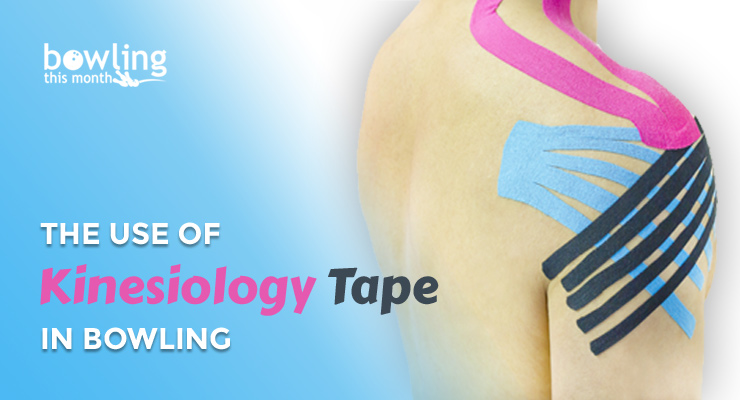Article Contents
- 1. Anatomy crash course
- 2. Healing mechanisms
- 3. The purpose of kinesiology tape
- 4. Example uses
- 4.1. Elbow / forearm
- 4.2. Shoulder
- 4.3. Ankle
- 5. Summary
- 6. References
Note: This article is only available to Bowling This Month subscribers.
When I first became a writer for Bowling This Month back in 2014, one of the first topics suggested for an article was the why and how behind kinesiology tape. At that time, I was extremely frustrated with the concept of kinesiology tape (k-tape). I was strongly against it because I really felt that people were under the impression that k-tape would fix all their problems and heal their injuries like magic.
As an expert on human movement, I know that a lot needs to be done to truly correct a dysfunction that is causing pain. To me, k-tape was just like slapping on a bandage, popping aspirin for pain relief, or slapping ice on an area to decrease inflammation. These quick fixes for injuries aren’t truly addressing the underlying problem.
Additionally, a person applying k-tape at the site of an injury is going to have to continue to use the tape to relieve their symptoms until a mechanical change is made that improves range of motion, increases stability, or strengthens the weak muscles that led to the current problem. If time outside of the bowling center isn’t being taken to work on these physical aspects, then nothing is going to be accomplished to eliminate the injury.
That was my philosophy on k-tape for a very long period of time. However, in my position helping the bowling community with health and fitness advice, I have continuously received questions about the use of kinesiology tape. For example, bowlers would often approach me and ask for advice on how to tape an area that is causing them discomfort. I always have to remind people that I’m not an athletic trainer and, therefore, I’m not well-versed in athletic taping methods. Rather, I’m ...
Already a premium member? Click here to log in.


 (Only
(Only 